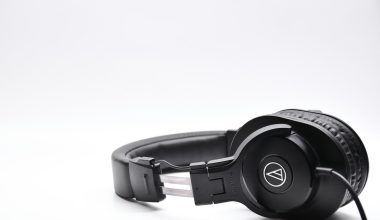If you love creating videos, you know how important music is to set the tone. But, before you add a song to your YouTube video, there’s one crucial thing to check: whether it’s allowed on YouTube. It might seem complicated, but don’t worry! This guide will make it super simple for you to figure it out. Let’s dive in!
Why Is It Important to Check?
Using music in your YouTube videos isn’t just about picking a catchy tune. It’s also about respecting copyright laws. If you use a song without permission, your video might get taken down, or worse, you could face legal consequences. Even if a song isn’t outright banned, it could lead to your video being demonetized. That’s why it’s always a good idea to make sure the song you’re using is allowed.
Start With YouTube’s Audio Library
The easiest way to ensure your song is allowed is to use YouTube’s Audio Library. This is a collection of free music and sound effects that anyone can use without worrying about copyright issues. Here’s how you can access it:
- Open your YouTube Studio.
- Navigate to the “Audio Library” tab.
- Browse through the available tracks and download the ones you like.
The best part? These songs are completely safe to use, so you don’t have to double-check permissions.
Check the Copyright Details of a Song
If you want to use a popular song or a track not found in the Audio Library, you’ll need to dig deeper. Start by searching for the song’s copyright details. Many artists and record labels have specific terms for how their music can be used on platforms like YouTube. Sometimes, they allow personal use but restrict commercial use. Here’s what you can do:
- Search for the song’s copyright owner: Look for the record label or artist’s official website.
- Check their licensing policy: Many websites have a section about music usage rights.
- Contact the copyright owner: If the information isn’t clear, don’t hesitate to ask directly. A simple email can save you a lot of trouble later.
Use Content ID to Your Advantage
YouTube’s Content ID system can also help you determine if a song is allowed. This system scans videos for copyrighted material and notifies you if there are any issues. Before uploading your final video, try these steps:
- Upload the video as “Unlisted” or “Private.”
- Wait for YouTube to analyze the video.
- Check the “Restrictions” section in your video details.
If the song triggers a copyright claim, you’ll see details about the claim, including what actions might be taken.
Consider Royalty-Free Music Platforms
Another safe option is to use music from royalty-free platforms. Websites like Epidemic Sound, Artlist, and AudioJungle offer vast libraries of music for a subscription fee or one-time purchase. These songs come with licenses that grant you permission to use them on YouTube without any issues. While this isn’t free, it’s a great way to access high-quality music legally.
Look for Creative Commons Music
Creative Commons is another way to find music that’s allowed on YouTube. Artists who use Creative Commons licenses specify how their work can be used. Some licenses require attribution, while others might restrict commercial use. To find Creative Commons music:
- Visit platforms like Free Music Archive or Jamendo.
- Filter your search by the type of license you need.
- Always read the license terms carefully before downloading.
Check YouTube’s Policies
YouTube has specific policies regarding music usage, so it’s worth reviewing them. For instance, some songs are allowed but will trigger ads to support the copyright owner. This is common for popular tracks. You can find more details in the “Copyright Help” section of YouTube’s website.
Tips to Stay Safe
To ensure you’re always in the clear, follow these tips:
- Keep records of permissions: If you’ve purchased a license or received permission, save the documentation.
- Avoid unknown sources: Downloading music from random websites can be risky. Stick to trusted platforms.
- Use YouTube’s music policies tool: Search for specific songs and see how they’re treated on YouTube.
Final Thoughts
how to check if a song is allowed on youtube doesn’t have to be overwhelming. By using tools like YouTube’s Audio Library, royalty-free platforms, and Content ID, you can easily ensure your videos are compliant. Remember, taking a little extra time upfront can save you a lot of headaches later.
So next time you’re adding music to your video, take a moment to check if it’s allowed. It’s worth it for the peace of mind and to keep your channel running smoothly!
For further reading, explore these related articles:
- Exploring the Best Free Music Distribution App for Independent Artists
- Comprehensive Breakdown of Music Distribution Costs for Artists
For additional resources on music marketing and distribution, visit Deliver My Tune.






